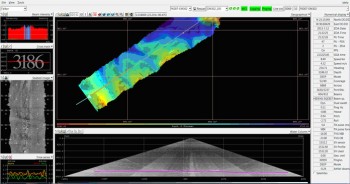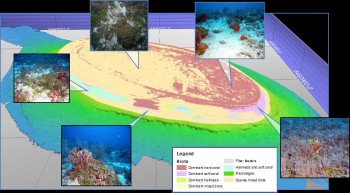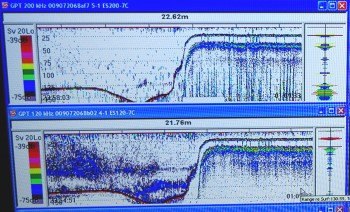Sounding out hidden reefs
Dr Ben Radford from the Australian Institute of Marine Science and collegues from the University of Western Australia and Schmidt Ocean Institute have been exploring ‘hidden’ coral reefs in remote areas of northwest Australia in the Timor sea.
These deeper reefs, known as shoals, rise up from seabed depths of 100-300m to within 20-30m of the sea surface. With the region estimated to supporting more than 100 shoals, they form a very significant network of coral reef habitat between Indonesia and Australia. We have only recently started to document the number of scale of these shoals, there still remain many undiscovered areas but we already know they have significant biodiversity value forming habitat for abundant fish species with high biodiversity.
The reason that these shoal systems have remained hidden is because in most cases they are not close to the surface. Starting at depths of around 20 meters or deeper, ships safely sail over them. Therefore, it is only recently that these diverse coral reefs have received any detailed biological assessments. However, from the ocean’s surface they remain largely unseen so there is a significant challenge in finding these shoals and documenting the extent and biodiversity.
Seeing with sound
It is well know that many marine animals use sound known as echolocation to navigate and orientate themselves in the marine environment and we’ve learnt form then using a very specialised sonar systems called a multibeam. A multibeam sonar sends out sound waves which bounce off the sea floor and by measuring these returning waves, this allows us to make a sound map of these shoals. Using underwater video and still photography we can navigate around this soundscape and explore and record different habitats present.
Combining these images and the sonar data using statistics allows Dr Radford to make three dimensional models of the shoals and their different coral, sponge and plant habitats. These models combined with oceanographic data will allow us to have a better understanding of how the shoals function and what enables them to support such high biodiversity of plants and animals including many fish species.
Sounding out the water column
Dr Radford has been using another type of ecosounder called an EK60 to ‘sound out the water column’. EK60 echosounder can scan for all sizes of objects from small plankton (small animals and plants) to large fish in the water column not just on the sea floor. Water column echosounders send sound waves of different frequencies through the water. These sound waves bounce or echo’s off anything that it hits and are picked and measured up by a receiver. Dr Radford is particularly interested in understanding productivity associated with upwelling along the edges of the shoals. This is likely to be an important process driving the high biomass and species diversity associated with these submerged coral reefs.










